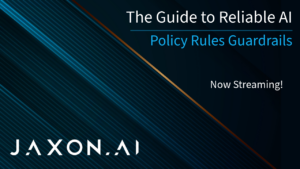 As the AI community celebrates the sophistication of models like ChatGPT, it’s critical to remember the challenges that accompany such advancements. One of the most pressing challenges? Anomaly detection in conversations. As conversational AI becomes increasingly prevalent, ensuring that these interactions are both meaningful and safe becomes paramount.
As the AI community celebrates the sophistication of models like ChatGPT, it’s critical to remember the challenges that accompany such advancements. One of the most pressing challenges? Anomaly detection in conversations. As conversational AI becomes increasingly prevalent, ensuring that these interactions are both meaningful and safe becomes paramount.
1. The Growing Significance of Anomaly Detection
In the realms of finance, healthcare, and manufacturing, anomaly detection has been crucial in identifying fraudulent transactions, unexpected patient outcomes, and manufacturing defects. In the world of conversational AI, anomaly detection is our compass – helping us identify when the AI veers off course, either by producing inappropriate outputs or by misunderstanding context.
2. Why ChatGPT Makes Anomaly Detection Essential
Models like ChatGPT are intricate, driven by billions of parameters, and trained on vast datasets. Their expansive knowledge base is both a strength and a vulnerability. Without proper safeguards, these models can occasionally produce outputs that are inaccurate, inappropriate, or potentially harmful.
3. Challenges in Detecting Anomalies in Conversations
-
Diversity of Conversations: Unlike structured data, where anomalies might manifest as statistical outliers, conversations are dynamic, making standard detection mechanisms less effective.
-
Subjectivity: What one individual finds as an acceptable response might be viewed as an anomaly by another.
-
Scalability: With millions of interactions occurring concurrently, real-time anomaly detection is computationally challenging.
4. Potential Approaches
-
Feedback Loops: By integrating user feedback mechanisms directly into chat platforms, users can flag anomalous interactions. Over time, this feedback can be used to refine and improve the model’s responses.
-
Hybrid Models: Leveraging rule-based systems in tandem with deep learning models can create a safety net, ensuring that certain topics or responses are handled in pre-defined ways.
-
Real-time Monitoring: Using separate, lightweight models to oversee ChatGPT’s responses in real-time might provide an additional layer of scrutiny.
5. The Broader Implications
Beyond mere technical solutions, anomaly detection in conversational AI ties into the broader discourse on AI ethics. Models that are well-audited and transparent in their operations help build trust with the public. Moreover, by ensuring that interactions are safe and meaningful, we can harness the true potential of models like ChatGPT in sectors like education, mental health, and customer service.
6. Towards a More Robust Conversational Future
The age of ChatGPT signifies more than just technological prowess; it symbolizes the profound ways in which humans and AI can converse and collaborate. However, like any tool, its efficacy and safety are determined by the safeguards we put in place.
As we continue to innovate and push the boundaries of what conversational AI can achieve, anomaly detection remains our North Star – guiding us towards interactions that are not only intelligent but also respectful, safe, and meaningful.
In our relentless pursuit of AI excellence, let’s remember that our goal isn’t just to create smart machines, but to foster intelligent and safe collaborations between humans and machines. With vigilant anomaly detection, we can ensure that every conversation brings us closer to this vision.





